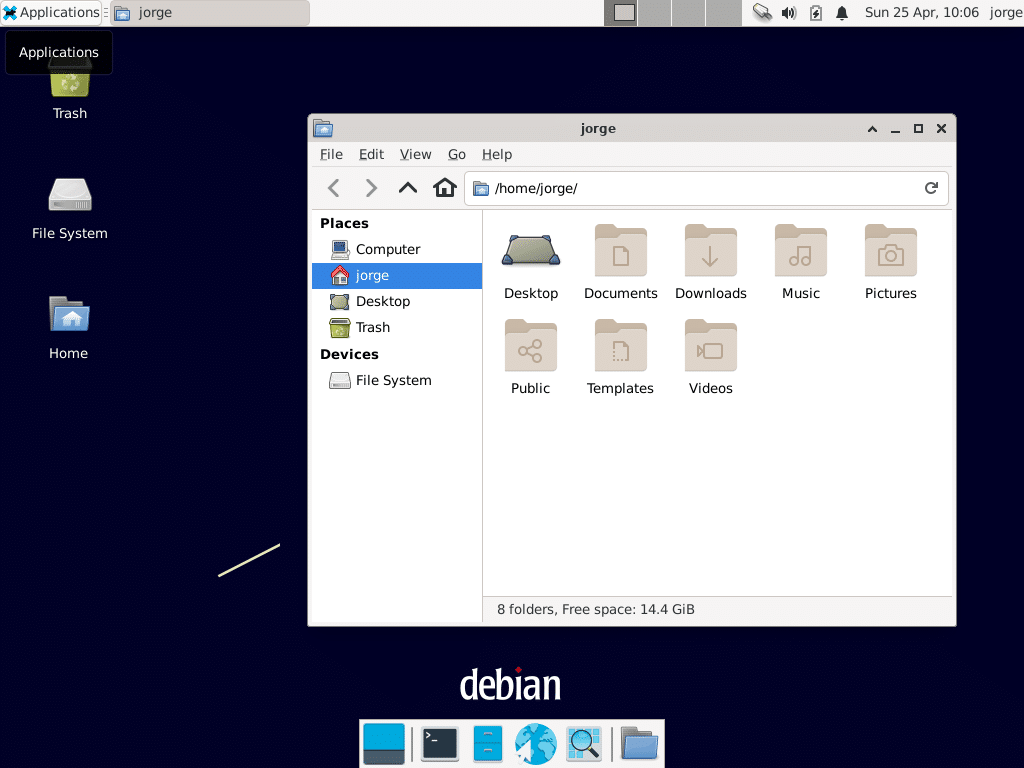The Linux file system might seem complex to users familiar with Windows, but it follows a logical structure based on UNIX traditions. Below, we dive into how this system is organized, what each directory represents, and how it differs from other operating systems.
General File System Structure
Unlike Windows, which uses drive letters (C:, D:), Linux employs a single root directory (/) from which all other directories stem. This structure includes folders with specific functions, many of which adhere to the Filesystem Hierarchy Standard (FHS).
Root Directory (/) and Key Subdirectories
/bin(Binaries):
Contains essential programs for system operation, such asls(list files) andcat(view file content)./sbin(System Binaries):
Similar to/bin, but includes administrative tools requiring root permissions, such asifconfigfor network management./boot:
Stores all files required to boot the operating system, including boot loaders like GRUB and kernel files./dev(Devices):
Represents hardware devices as files. For example, a hard drive might bedev/sda, with partitions labeled asdev/sda1,dev/sda2, etc./etc(Configuration):
Houses system-wide configuration files, such as repository lists forapton Debian-based distributions./home:
The main directory for each user, storing personal files and settings. It is similar to “Documents and Settings” on Windows./lib,/lib32,/lib64:
Contains libraries required by programs in/binand/sbin./mediaand/mnt(Mount Points):
Directories where storage devices like USB drives or external hard drives are mounted./mediais automatically managed, while/mntis for manual mounting./opt(Optional Software):
Holds optional or third-party software, such as manually installed applications./proc(Process Information):
Provides real-time information about running processes and system resources. Each process has a directory in/proc./root:
The home directory for the root user, separate from/hometo ensure access even if user partitions are unavailable./tmp(Temporary):
Stores temporary files created by applications during a session. These files are often deleted upon reboot./usr(User Space):
Contains user-installed applications and resources. Subdirectories include/usr/binfor binaries and/usr/libfor libraries./var(Variable):
Stores files that change frequently, such as logs (/var/log) and print queues.
Differences from Windows
- Case Sensitivity:
In Linux,File.txtandfile.txtare different files, unlike in Windows. - Software Installation:
Applications are not installed in a single folder like “Program Files.” Instead, binaries are distributed across/bin,/usr/bin, etc., with configuration files stored in/etc. - Device Mounting:
Linux doesn’t use drive letters. Devices are mounted in specific directories under/mediaor/mnt.
Advantages of the Linux File System
- Modularity:
Logical directory separation simplifies maintenance and organization. - Standards Compliance:
Adherence to FHS ensures consistency across most Linux distributions. - Flexibility:
Users can mount directories like/homeon separate partitions, preserving personal data during system reinstalls. - Resource Efficiency:
Files and libraries are shared among programs, reducing redundancy.
Conclusion
While the Linux file system may seem intimidating at first, it becomes a powerful tool for managing and organizing systems efficiently once understood. Its clear separation of configurations, programs, and data offers advanced customization and control, making it significantly advantageous over other operating systems.
If you’re new to Linux, exploring and familiarizing yourself with this structure will help you make the most of this robust and flexible platform. Keep learning and experimenting!

